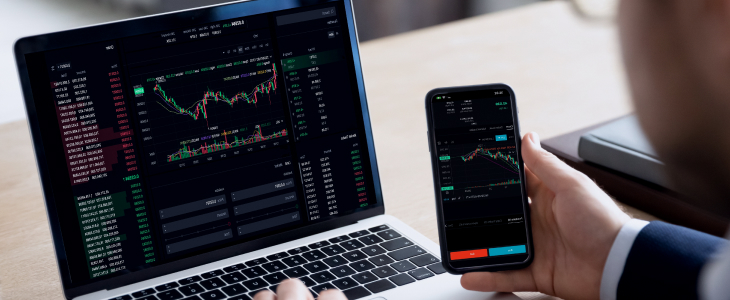
How to Open a Forex Trading Account: A Step-by-Step Guide
Starting your journey in the world of forex trading can be both exciting and intimidating. Many traders are attracted by the potential for high returns and the flexibility that comes with currency trading. However, before diving into the forex market, it is essential to understand how to open a forex trading account effectively. Whether you’re an experienced trader or a beginner, this guide will walk you through the necessary steps. If you’re located in Pakistan, you might want to explore open forex trading account Trading Brokers in Pakistan that cater to your needs and provide favorable trading conditions.
1. Understanding Forex Trading Accounts
A forex trading account is an account you open with a broker to buy and sell currencies. It is similar to a bank account, but it’s specialized for trading purposes. There are several types of trading accounts available, including:
- Standard Account: A typical type of account for trading in larger volumes, suitable for experienced traders.
- Mini Account: Allows traders to buy and sell smaller amounts of currency.
- Micro Account: Ideal for beginners, enabling them to trade even smaller amounts.
- ECN Account: Offers direct market access and typically lower spreads.
2. Choosing a Forex Broker
The first step in opening a forex trading account is selecting the right broker. The broker acts as an intermediary between you and the forex market. Here are some factors to consider:
- Regulation: Ensure the broker is regulated by a reputable financial authority to protect your investments.
- Trading Platform: Look for a user-friendly platform with essential tools and features for trading.
- Spreads and Fees: Compare the costs associated with trading, including spreads, commissions, and withdrawal fees.
- Customer Support: Reliable customer service can significantly enhance your trading experience.
3. Filling Out the Application Form
Once you’ve chosen a broker, you will need to fill out an application form. This typically involves providing personal information such as:
- Your full name
- Email address
- Phone number
- Address
- Date of birth
Be prepared to verify your identity by providing documentation, such as a government-issued ID and proof of residence. This step is crucial for compliance with regulatory standards and to prevent fraud.
4. Making a Deposit
After your account is set up and verified, the next step is making a deposit. Most brokers offer multiple funding options, including:

- Bank wire transfers
- Credit/debit cards
- Online payment platforms (e.g., PayPal, Skrill)
Consider the minimum deposit requirement and choose a funding method that suits your needs. Be aware of transaction fees that may apply, especially for certain payment methods.
5. Practicing with a Demo Account
Before you start trading with real money, it is recommended to practice using a demo account. A demo account allows you to trade with virtual funds, giving you a risk-free environment to learn the ropes and develop your trading strategy. Most brokers provide demo accounts that mirror the live trading environment.
6. Developing a Trading Strategy
Having a solid trading strategy is vital for success in forex trading. Here are some popular strategies to consider:
- Scalping: This strategy involves making quick trades to capitalize on small price movements.
- Day Trading: Traders open and close positions within the same trading day to minimize exposure to market fluctuations.
- Swing Trading: This strategy aims to capture gains over a few days or weeks by taking advantage of price “swings.”
- Position Trading: Involves holding onto a currency pair for an extended period, based on fundamental analysis.
7. Monitoring Your Trades and the Market
After you’ve opened your account and developed a trading plan, the next step is to monitor your trades and the forex market actively. Stay updated with financial news, economic indicators, and geopolitical events that may affect currency prices. Utilize analytical tools provided by your broker to gain insights into market trends and make informed decisions.
8. Risk Management
Risk management is a critical aspect of trading. It involves strategies to minimize losses and protect your investment. Some common risk management techniques include:
- Setting Stop-Loss Orders: This automatically closes your position at a predetermined price, limiting your losses.
- Diversifying Your Portfolio: Avoid putting all your funds into a single trade or asset. Spread your investment across different currency pairs.
- Managing Leverage: While leverage can amplify profits, it also increases losses. Use it wisely and be aware of the risks involved.
Conclusion
Opening a forex trading account is the first step towards participating in the expansive foreign exchange market. By choosing a reliable broker, understanding the basics, and implementing sound trading strategies, you can increase your chances of success while minimizing risks. Remember to stay informed and continuously improve your trading skills. The forex market offers endless opportunities, and with the right approach, you can achieve your trading goals.
